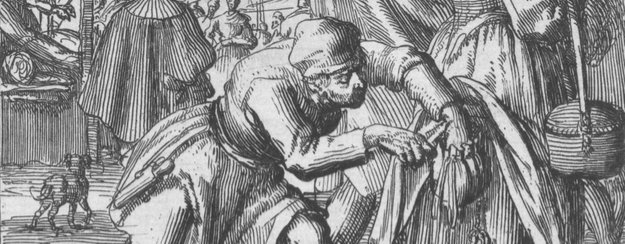
The Alea iactanda est blog has done a fantastic job of translating some of the new content from the 2nd edition of Epées & Sorcellerie from French into English. However I did notice a few inconsistencies in the text of the Thieves article (you can read it here) which led me to do a little digging. Part of the translation reads:
“In addition, when he is prowling about on his own, a Thief adds his attack bonus to the normal surprise chance (1-in-6). For example, a Level 4 Thief would have 2 chances out of 6 to surprise his opponents. Carrying a light source cancels this bonus.”
Attentive E&S players will no doubt recall that the surprise roll in the English 1st edition differs from the aforementioned one:
“If in doubt about the surprise, consider the probability of surprise in an unexpected meeting to be 2 chances in 6.”
So something’s amiss here. Not having the French 1st edition to hand, I consulted the relevant sections in the French 2nd edition:
“De plus, lorsqu’il rôde seul, un Voleur ajoute son bonus d’attaque à la chance normale de surprendre les monstres (1 sur 6). Par exemple, un Voleur de niveau 4 aurait 2 chances sur 6 de surprendre ses adversaires. Porter une source de lumière annule ce bonus.”
“En cas de doute sur la surprise, considérez que les probabilités d’être surpris lors d’une rencontre inattendue sont de 2 chances sur 6.”
One doesn’t need to be a cunning linguist to figure out that the inconsistency in the surprise roll is in the original French text. It is not through any fault of the translator.
But there is more dear reader!
The keen eyes amongst you will have noticed that the example given, is also flawed. A Thief doesn’t gain an Attack Bonus until level 5 according to the table in the French 2nd edition (see below).

Strictly speaking the conclusion of the example is correct – if the chance of surprise used is 2 in 6 as mentioned in the Surprise quote. A level 4 Thief has no Attack Bonus, so their chance of surprise is still 2 in 6. However the 1st sentence in the example says that the normal chance of surprise is 1 in 6, so this makes the whole example unhelpful.
So for this paragraph to be consistent with rest of the text it should really be:
“In addition, when he is prowling about on his own, a Thief adds his attack bonus to the normal chance to surprise monsters (2 in 6). For example, a Level 5 Thief would have 3 chances out of 6 to surprise his opponents. Carrying a light source cancels this bonus.”
But of course there’s always the possibility that the standard surprise roll should indeed be 1-in-6. But upon referencing OD&D (Book III p9), I’d say that my proposal is probably correct.
“If the possibility for surprise exists roll a six-sided die for each party concerned. A roll of 1 or 2 indicates the party is surprised.”
I rest my case, M’lud.

